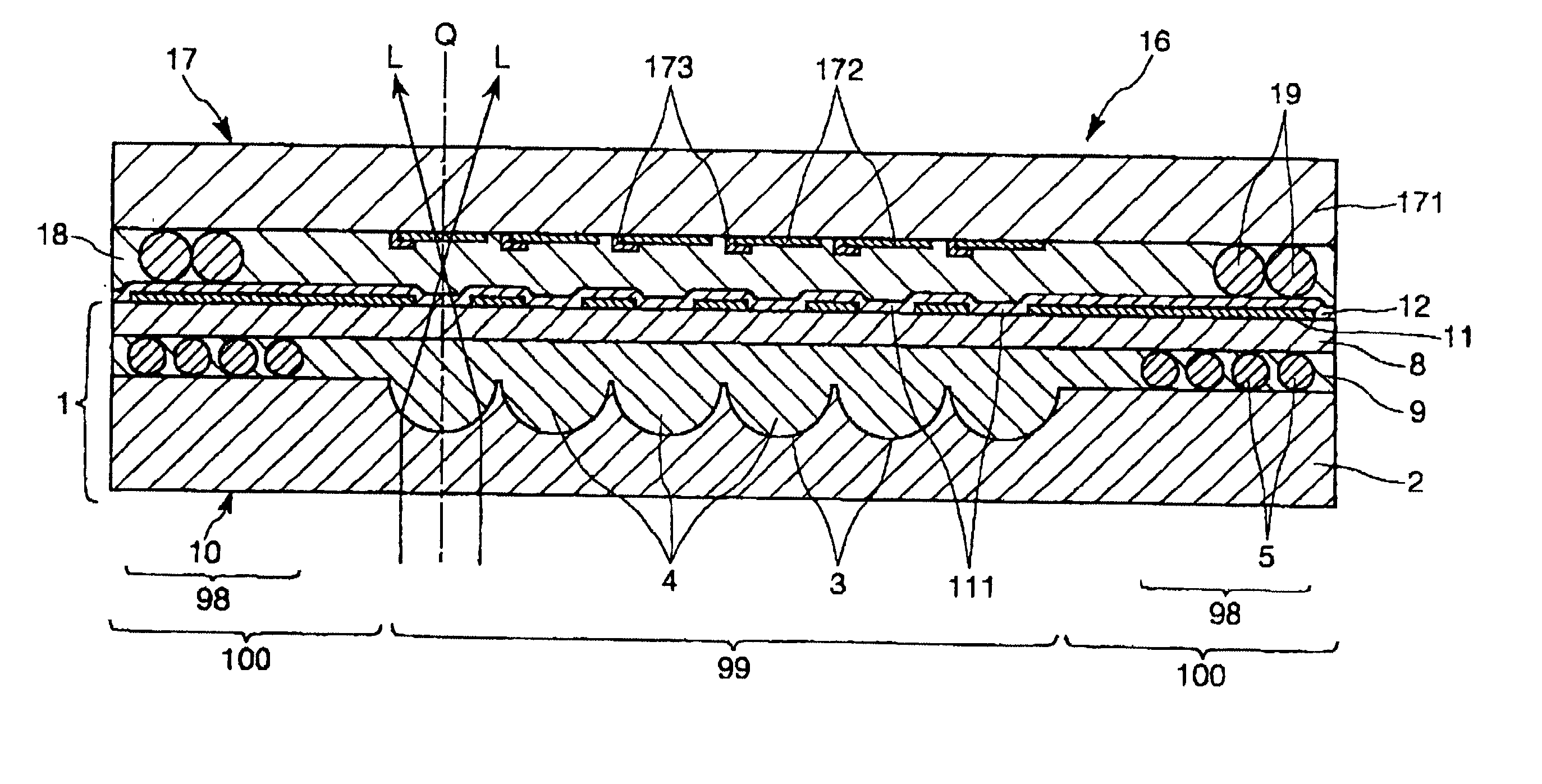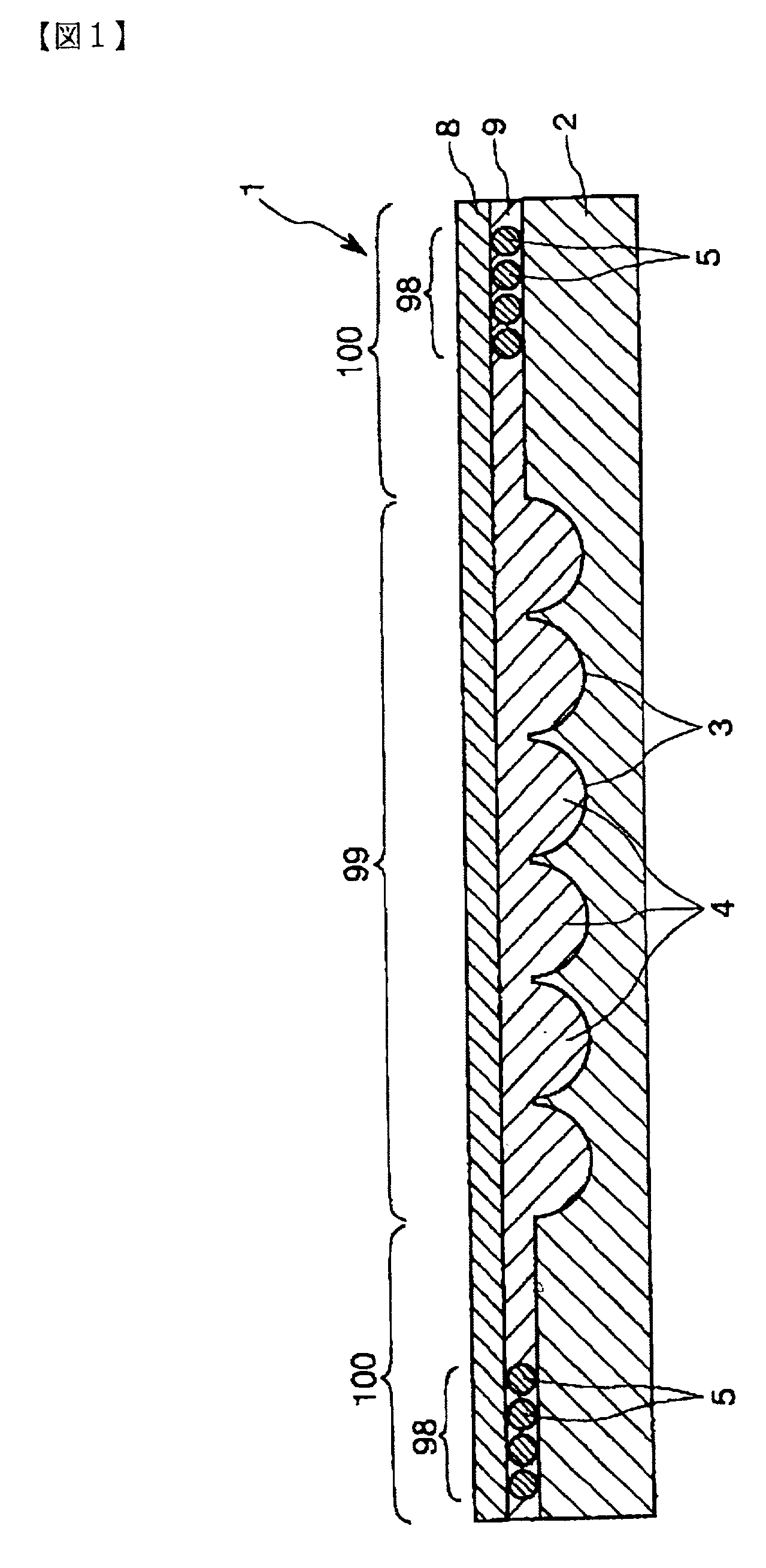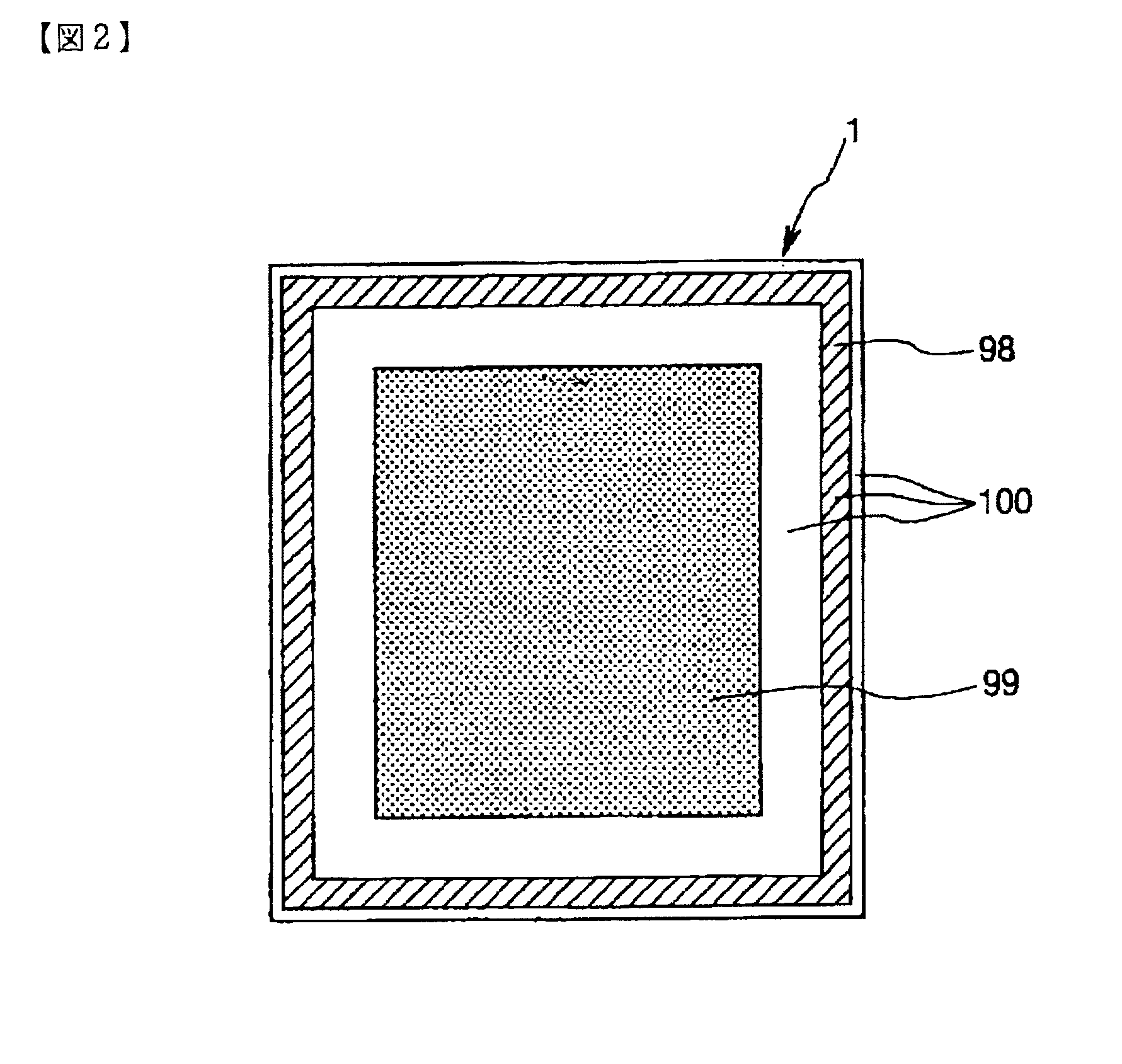Method for manufacturing microlens substrate, microlens substrate, opposing substrate for liquid crystal panel, liquid crystal panel, and projection display apparatus
a technology of microlens and substrate, which is applied in the direction of instruments, projectors, domestic applications, etc., can solve the problem of limiting the accuracy of regulating the thickness of the resin layer 909, and achieve the effects of avoiding the risk of deteriorating the optical characteristics of the microlenses 4 and reducing the risk of deterioration of the optical characteristics of the microlenses 4 and reducing the risk of deterioration of the optical characteristics
- Summary
- Abstract
- Description
- Claims
- Application Information
AI Technical Summary
Benefits of technology
Problems solved by technology
Method used
Image
Examples
example 1
[0198] A microlens substrate was manufactured, as described below. The thickness of a resin layer was designed so as to be set to 12 .mu.m.
[0199] A green rectangular silica-glass substrate (transparent substrate) having a thickness of 1.2 mm was prepared as a base material. The silica-glass substrate was dipped in a cleaning agent (a mixture of sulfuric acid and an aqueous solution of hydrogen peroxide) so as to be cleaned, and was cleaned at the surfaces thereof.
[0200] 1. A polycrystalline silicon film having a thickness of 0.4 .mu.m was deposited by a CVD method on front and rear surfaces of the silica-glass substrate.
[0201] The deposition was performed by supplying SiH.sub.4 at a speed of 300 ml / minute to a CVD furnace which was set to 600.degree. C. and 80 Pa, in which the silica-glass substrate was placed.
[0202] 2. Openings associating with the concavities to be formed were formed in the polycrystalline silicon film.
[0203] The process was performed in a manner such that a resis...
example 2
[0212] In the same fashion as described above, a wafer-shaped microlens substrate shown in FIG. 3(i) was manufactured.
example 3
[0213] In the same fashion as described above, a wafer-shaped microlens substrate shown in FIG. 3(ii) was manufactured.
Example 4
[0214] In the same fashion as described above, a wafer-shaped microlens substrate shown in FIG. 4(iii) was manufactured.
PUM
| Property | Measurement | Unit |
|---|---|---|
| density | aaaaa | aaaaa |
| particle size | aaaaa | aaaaa |
| particle size | aaaaa | aaaaa |
Abstract
Description
Claims
Application Information
 Login to View More
Login to View More - R&D
- Intellectual Property
- Life Sciences
- Materials
- Tech Scout
- Unparalleled Data Quality
- Higher Quality Content
- 60% Fewer Hallucinations
Browse by: Latest US Patents, China's latest patents, Technical Efficacy Thesaurus, Application Domain, Technology Topic, Popular Technical Reports.
© 2025 PatSnap. All rights reserved.Legal|Privacy policy|Modern Slavery Act Transparency Statement|Sitemap|About US| Contact US: help@patsnap.com



